Leonardo has announced that it has been contracted by the Ministry of Defence to provide a defensive aids suite for the British Army’s new fleet of Apache AH-64E helicopters.
The company say that under related contracts from the UK MOD and Boeing, Leonardo will integrate sensors and countermeasures to ensure that UK Apaches remain amongst the best protected attack helicopters in the world.
According to Leonardo:
“Combat helicopters like the Apache fly at relatively low speeds compared to fighter jets and often at low altitudes, so they are vulnerable to a wide range of threats including infrared-guided missiles and anti-tank guided weapons. An integrated defensive aids suite helps protect a helicopter from threats in a joined-up way. A complete system includes sensors to identify threats to the helicopter, countermeasures to defeat these threats and a computer that coordinates the whole system, linking the incoming warnings with protection techniques such as chaff or flares.”
Minister for Defence Procurement Guto Bebb said:
“UK Apaches provide our Armed Forces with world-leading capabilities in the field of combat. Today’s announcement will see our aircraft fitted with cutting-edge British protection to rapidly detect and defeat inbound threats. This is a welcome boost for UK jobs and investment which is part of the Government’s recently announced Defence Industrial Policy Refresh.”
Every Apache AH-64E that comes off the production line, regardless of its end user, already has a built-in Leonardo defensive aids suite computer, known as an ‘AGP’ (Aircraft Gateway Processor). This project will see Leonardo take the UK’s Apache defensive aids suite a step further by integrating a number of sensors and countermeasure systems onto the AH-64E to enhance its situational awareness and survivability.
The helicopters’ sensor fit will include Leonardo’s SG200-D radar warning receiver (the UK-specific variant of the company’s SEER family) and will re-use a number of systems that are currently on-board the Army’s fleet of Apache AH Mk1. These re-used sensors and effectors include Leonardo’s S1223 laser warning receiver, the BAE Systems AN/AAR-57 missile approach warner and the Thales Vicon countermeasure dispensing system. Initially these systems will be taken from spares stores and the remainder will become available when the AH Mk1s retire from service in 2023/24.
This means that the British Army will experience a seamless transition to the new helicopter type with both old and new models being equipped with integrated protective suites on operations.
Integration will be conducted by Leonardo in Luton and the complete system will then be installed by Boeing on its AH-64E production line in the United States.


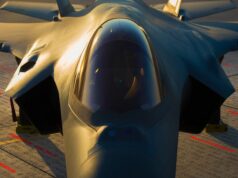

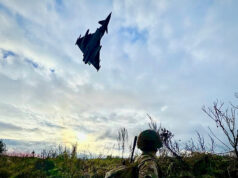
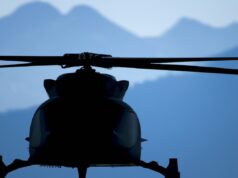
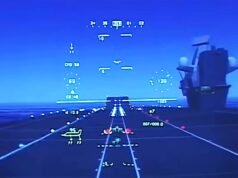

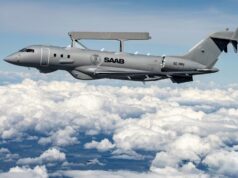
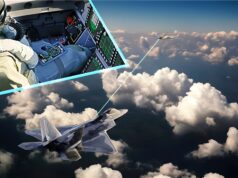
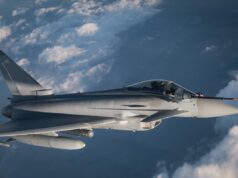
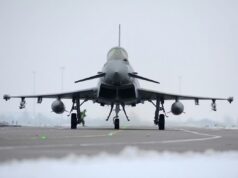

I’m sure one area of rapid development will be in the field of anti-helicopter / drone, attack systems as both become increasingly effective.
Great news, and with the British success story that is the Brimstone missile we will have the best attack helicopter in the world armed with a world class weapon system.
https://www.themilitarytimes.co.uk/single-post/2018/03/27/UK-backs-MBDA’s-Brimstone-missile-to-2030-and-beyond
Yes.
But 38 of them. 38.
Numbers are getting ridiculous.
Even if the other 12 magically appear 50 is too small no matter how world beating politicians say it is.
I thought a 50 aircraft order had already been made? 38 is crazy, we should have double that in my opinion. They are massively capable, but we are having to get used to seeing such brilliant platforms only ordered in small quantities e.g. T26, Astute class.
I’ve also read that the E model is designed to be able to undertake maritime missions, thanks to the improved Longbow radar. If SPEAR 3 is integrated you have a very capable maritime attack helicopter equally well suited to destroying small high speed craft as Merlin potentially.
38 have been ordered with 12 coming at a latter date according to MoD. There was an article about it here a few months back. Disgraceful.
Oh dear it’s the majority order again, only to let the remaining be forgotten. I’d be happier with fewer C2, maybe around 150, and 70 Apache. Realistically we would not be able to deploy large numbers of tanks quickly enough to help hold off a Russian incursion, and the idea that Britain itself would get invaded is just silly. We need assets that can be moved quickly, which helos are
I quite agree.
Single regiment
3 sqns of 8 helicopters, 4 at a push if 50 are ordered.
Be interesting to see what the AAC are going to do with regards Apache and Wildcat.
In effect yes.
The current state of play is that the 2 current regiments we have, 3 and 4 AAC, have been reduced to 2 Squadrons each from the previous 3, so yes 4 Squadrons in 2 regiments.
But in addition there is an additional Apache Squadron at Wattisham for Operational Training, and the “OCU” Apache Squadron at Middle Wallop.
I fully expect 1 of the regiments to get the chop when / if AAC Wattisham closes and the remaining concentrated in a single regiment near Salisbury Plain, leaving the army with a ridiculous situation of having 2 front line regiments, as, long forseen, 5 Regiment AAC will be disbanded and the Defenders transferred to the RAF.
Hardly the Army Air Corps is it?
Scandalous HMG. Scandalous.
Evening
I’m more the optimist, but share your concerns.
However if the AAC could arrange itself with:
2 Regiments
Each Regt contains 2 x Apache Sqns (8 per Sqn) but fleet managed, by this I mean the operational Sqn has all 8 at readiness and the other 4/6 a/c
1 x Wildcat Sqn of 8 a/c
3 Cdo Bde would also retain its Sqn of 6 Wildcat giving:
4 Sqn of Apache – 32 (50) front line aircraft at 2.5 crews per frame
3 Sqn of Wildcat – 22 (34) front line aircraft at 2.5 crews per frame.
This meets harmony guidelines (just), gives flexibility in fleet management and allows the AAC to declare an operational Apache and Wildcat Sqn (8 + 8 and 40 crews).
Yes, the AAC will drop to under 100 operational rotary wing aircraft but those aircraft can get the proper investment they need to make them force multipliers. The REME can support them, the Royal Sigs can dedicate a Sqn to each Regt (from 21 Sigs (AS) Regt).
Remember in 5 years we will have a Longbow equipped Apache helicopter armed with Brimstone 2 and Lynx Wildcat – not a bad place to be, not the best but not bad.
Just a correction Lee.
21 Air Support Regiment Royal Signals lost that role a few years back with the A2020 restructuring. It is now termed a “Multi Role ” signal regiment, one of 5.
Still at Colerne at the moment but the place is due to close, minus the SGS.
As for kit. Yes good but numbers, numbers too low.
I foresee a shuffling of assets and stuff like the UAV mission given to the AAC.
Many thanks for the correction, I was going on memory – How times have changed.
I am unsure whether the UAV mission will switch to the AAC, the RAF will put up a strong fight.
Numbers may be low but the aircraft will be new, plenty of hours in them so they can be fully utilised.
No I meant Watchkeeper from the RA to AAC. Reaper is strategic not tactical and rightly stays with the RAF.
Hi
I specifically mean the WatchKeeper – I would not be suprised if the RAF made a play for it, at least putting it under 1 Gp (34 EAW) so its has operational control.
We should have over a hundred of these things at the price we are paying and them some in reserve for attrition. If the budget is increased these should be one of the priorities, although there do seem to be so many needs these days, more frigates, mars replenishment, more subs, more tanks, missile defence systems, upgunning most of our platforms, more f35’s etc etc etc lol.
There are far more important priorities than buying more than 50 Apaches.
At the risk of being accused of fantasy fleets etc.
The Apache has been one of the most successful systems in use throughout the world in the last 20 years and is a clear force multiplier.
Given the price we are paying for the latest apaches the UK should really have at least 160 and not a miserly 38-50. £25m each is a steal in my books and the UK could and should have a more lethal force given its relatively small size.
We dont have to buy these all at once – but surely 16 a year at £400m is surely doable.
Hi Pacman27
What would you do with 160 of them?
That is circa 96 operational frames at a minimum of 1.5 crews per aircraft giving a total of 144 operational crews. Harmonise that and that is near on 900 crews or 1800 personnel (circa 3% of current army strength).
12 Sqns or 4 Regts plus all the support that goes with it is just something the Army couldn’t do.
Morning Lee,
I would have them as support for the strike brigades as clearly tanks aren’t going to keep up and for me these added to the Boxer make a great strike brigade. (I know its all rock, scissor, stones – but I would have these over tanks).
I also think that our force needs to have far more lethality built into it and also if we are moving to a more expeditionary force (as discussed many times on this forum) we need assets that pack a punch and can be deployed quickly. So for me the Apache fits in with this doctrine.
The force of 68 we have is knackered through over use, so it does seem a larger force would be useful and ultimately its a choice 5k personnel for such a force or doing something else, I would personally choose this platform.
I do think rotary is critical if we are to succeed in having any sort of viable land force in the future and a big part of that success would be apache.
One of the key areas the MOD really need to get right is it’d rotor asset procurement.
Yes we need to get the right number of Apaches is appropriate. That being a fleet that can support the present numbers of regiments and squadrons. But there are a whole host of other issues;
1) Numbers of Merlins, we really need more of these to support the carriers and they are literally the very best in the world in their role. The production line will not last for ever so we need to pinch out the last few for the RN.
2) light utility naval rotor, the wild cat are not really what the army wants (more attack and medium lift is the thing). The navy on the other hand love em. Give the army wild cats to the navy and replace with an increased order of apache and…….
3) Meduim lift is where it’s at, the Pumas are nackered ( and can’t fly or the carriers) and the AW101 can’t fit in the back of a plane, the 159 is just to small and is really a high end light navel rotor painted green. I would make a big order of AW149s to replace puma and 159 in army service. It’s a good rotor, sized right and brand new, can fly from a carrier and fit int the back of a plane.
Will it cost a bit more than a Blackhawk ? probably, but it’s a generation on (you would want to crash in the AW149 not the Blackhawk) and most importantly Leonardo have promised to move the production line to the U.K if we buy it. That’s massive as it’s got great export potential and it gives U.K. PLC a third and very salable military rotor manufacturing line (101, 149 and 159).
I sort of agree with you but would perhaps be a bit more ruthless and standardise further
Note: numbers predicated on a squadron of 16 split into 4 on station, 4 HR, 4 LR, 4 Maintenance.
Merlin is a world beater and we really need 272 across the whole military to be the workhorse.
Apache is the main attack and recon platform and I would say circa 144 (128+16OCU)
Chinook to be maintained around 72
Where it gets difficult is what next. Wildcat has its merits and the RN can probably take 72, but do we really need them if we go large on Merlin, given their realitvely newness I suspect the RN will have these for the escort fleet and retire this class afterwards.
Likewise do we go with Osprey as it has utility for the carriers and could take on a lot of the work of the Merlin, so its certainly not easy and one we do have to get right.
Given the changes occurring in this space – I think we keep going with Merlin, Apache, Chinnook and Wildcat with a big uplift in the former 2 types and maintenance of current numbers in the latter types and retire everything else ASAP.
Not much left to retire after those!
Gazelle almost gone.
Puma.
Dauphins of 658 AAC and they will certainly not be retired.
While I always agree with your proposals for proper 10 year plans and standardising and buying in bulk where possible I just cannot agree on your numbers.
272 Merlin! We have 50 odd in the entire armed forces! In fact I doubt there are 272 helicopters in the armed forces now. Spread across 3 Squadrons plus an OCU for surface fleet and a further 2 in CHF stolen from the RAF.
Lets be realistic and hope for a dozen more.
72 Wildcat for the RN? HMA2’s there are but 28, in 2 Squadrons, and deploying spread across a mere 17/19 escorts. The RN does not need 72. The ones used by 847 NAS in support of the RM use Army wildcat not naval.
I cannot see the RN retiring Wildcat otherwise what flies off our escorts? Maybe UAV?
I doubt more than a handful of Osprey would ever be purchased, if ever. I’d be delighted with a small squadron of 4 for special duties.
Don’t mean to be down beat but we must be realistic.
Daniele
I understand both yours and Lee’s points fully and it is true that the rotary fleet has taken a massive hit in numbers over the last 10 years (circa 60% reduction).
It is however one area where I believe we need more, not less of especially if we become a re-inforcing/expeditionary force for NATO’s northern flank and remove ourselves from mainland Europe.
Maybe my numbers are a bit high but there is some logic behind it, as you know I am a big fan of the Karel Doorman’s as a joint logistic/amphibious platform. Each of these can hanger 6 Merlin’s and I have proposed a fleet of 9 (54 op force + maintenance, Tides need 8). Keep going and the numbers start stacking up if we are to fill all assets 100% (which I believe we should be able to do).
It’s also fair to say they are great vfm at circa £30m each and we could order 16 per year until we can get the numbers somewhere reasonable and then review again.
This fleet will also give us a lot of leverage within NATO post Brexit, as it would be the largest European rotary fleet by some margin.
We also have to remember that although the 101 is a very good meduim rotor it also stretches the definition of meduim and is closer to heavy than to most meduim rotors ( it’s very large).
This means it’s not very air mobile at all, infact it takes around 2 weeks to disassemble, load in a C17, unload and put back together.
This means we need to replace Puma with a more modest size rotor that can carry 10-12 troops and fit intact in the back of our transport fleet. That’s a black hawk or a AW149.
I would go with the 149 because: Newer, ( this century air frame vs 1970s air frame) better crash protection for passengers, lot better range, slightly better load.
Economically the Blackhawk would be cheaper unit for unit, but overall costs to the UK would be loss of our sovereign ability to produce rotor, loss of a production line for a brand new export focused meduim rotor to Italy and loss of tax revenue from Yeovil as the south Somerset regional economy tanks.
In all this my wish list would be:
1) around 12 new Merlin2s for the RN
2) make up the RN wild cat fleet to around 50, allowing around 16 to be generated for operations. Remember each escort can take 2 and you would want around 4 for the carrier.
3) leave the army with a couple of dozen wild cats as scout/recce platforms
4) make a purchase of around 60 AW149s for the army.
We can’t consider Apache numbers in isolation. How many of our fast jets would be available to deliver Brimstone?. How many will carry Spear 3? Could our UAVs provide some anti-armour capability? What complimentary capabilities could or would our allies provide? What is the threat level?
Nick I totally agree and it certainly does need a fully developed strategy. A key differentiator for me with rotary is that it is primarily for load carrying and loiter activities,
For F35 I think we should pair them with Taranis/Magma as a force multiplier and do think unmanned systems will take over in the next 20 years.
Unfortunately we do need to get some scale going within rotary lift especially as it has been neglected for too long. It will cost but I think it would set us apart.
Looking at Global firepower it seems to me we should be aiming for a similar force size to the French which would mean a 50% increase in current numbers across almost everything.
Ref numbers and equipment, it is always illustrative to look at what the USA has in numbers and kit, it usually gives a pretty loud alarm call about our ever-diminishing forces. The USA is five times larger in population of course, so is going to have at least five times our numbers.
The US Army is forming 12 aviation Brigades, one per division with a few over for other tasks. Their divisional full-spectrum aviation brigade consists of:
Attack: 24 Apaches
Recce: 21 x Kiowa, 8 Shadow UAVs
Assault: 30 Black Hawks
Command: 4 x Black Hawks, 4 x EH-60s
Heavy lift/Casevac: 12 x Chinooks
CSAR: 15 HH-60 (Black Hawk/Paveway)
104 front-line helos per division!
That comes to 1,480 front-line helos in total – plus they have another 8 identical aviation brigades in the ANG.
1/5th of 1,480 is 296 helos. That is the sort of number the AAC should be striving for. (And that figure is just army, the USAF, USN and USMC all have their own helicopter fleets). What do we have, about 48 front-line, 32 Apache and 16 Wildcat (excluding the SAS Wildcat flight)? We can double-count the RAF Chinooks, as the politicians always do, but they are as likely to be off elsewhere doing troop transport, moving kit, stores, replacement parts, ordnance, etc., etc, they won’t necessarily be available for the AAC role.
Basically, our total is, as Daniel says, absolutely pathetic. Pacman is closer to the bull’s eye about the numbers needed. The problem is successive governments have run down thing so far that we now have a mountain to climb just to provide minimal helo support to the army, we don’t have enough of them to support even 2 brigades in the field, let alone 6 or the 7 or 8 we actually need.
We should be looking at two similar aviation brigades to support our 6 combat brigades and that means a big increase in numbers. We certainly need to get these extra 12 Apaches ordered pronto and drive forward with the Puma replacement programme, ideally the AW-149 and ideally in rather larger numbers then 23 Pumas.
Correction… there’s 110 helos in a US full spectrum aviation bde, not 104, can’t add up today. There’s also 20 x UAVs, 8 x Shadows for recce and 12 x MQ1 Strike Eagles for ground attack, total 130 front-line aircraft.
The AAC is about one-third the size of ONE US brigade – and they have 20 of them! We have become such a military pipsqueak over the last 20 years. The new political slogan should be: Punching well below our weight.